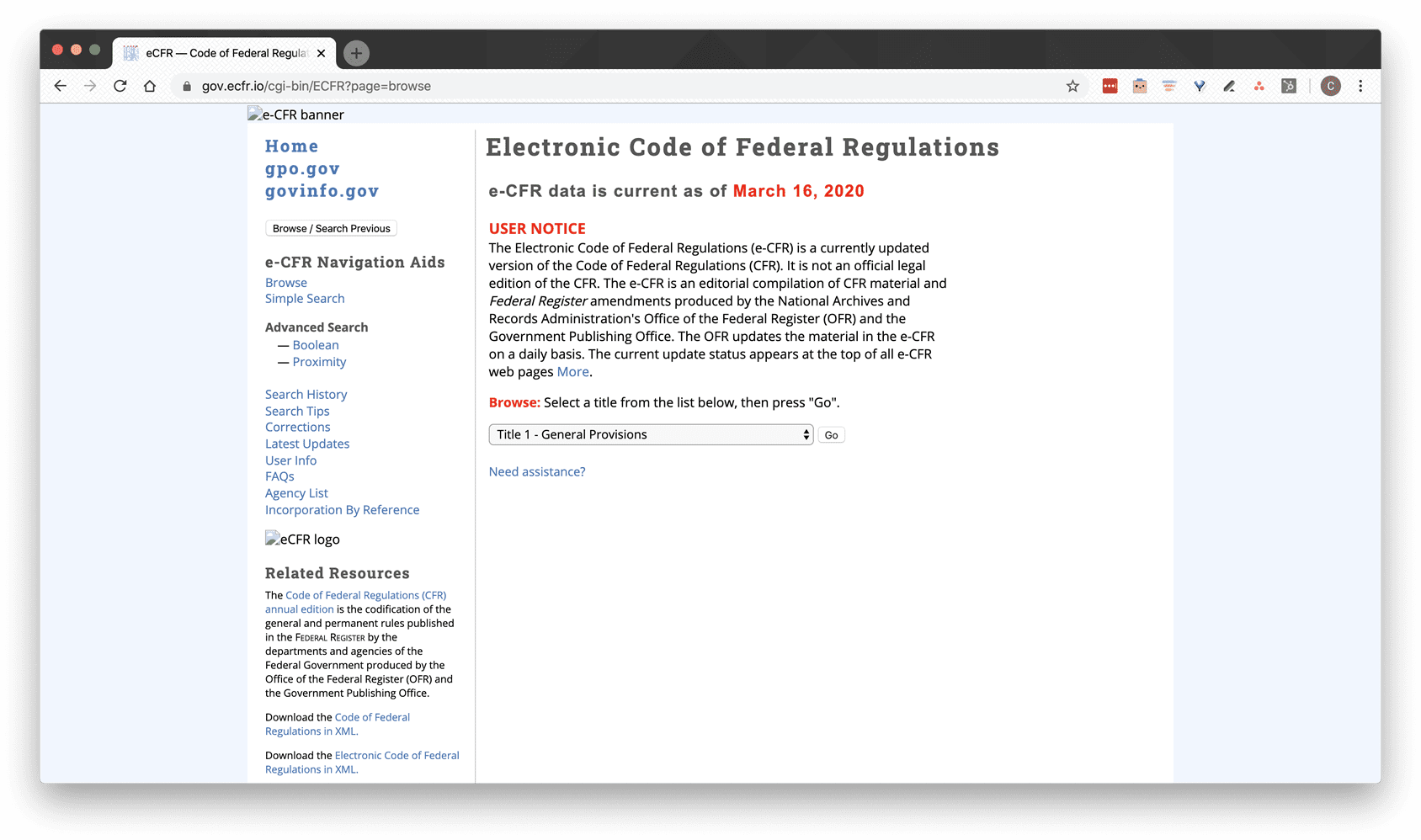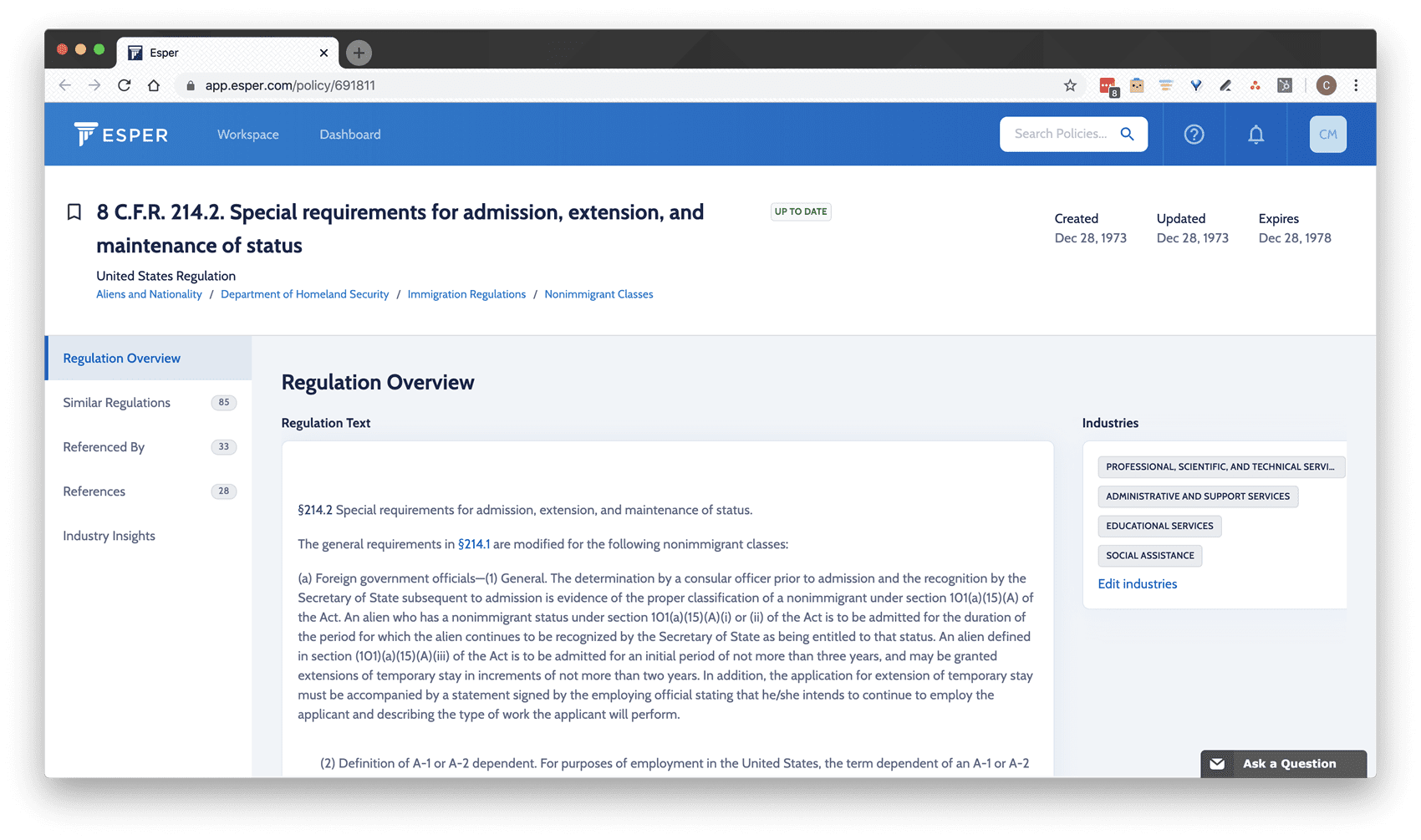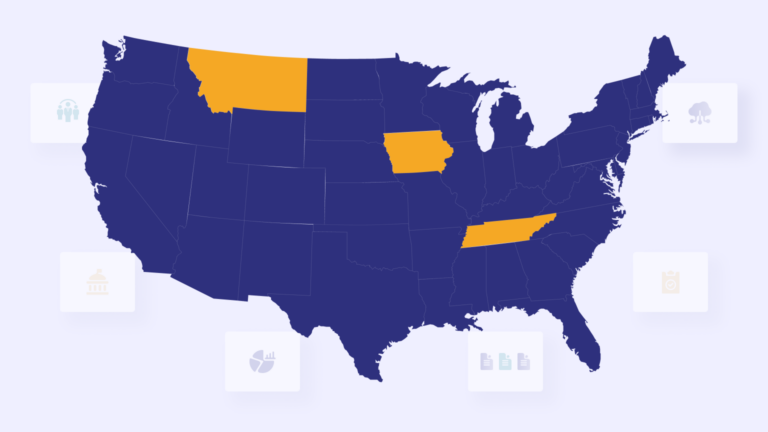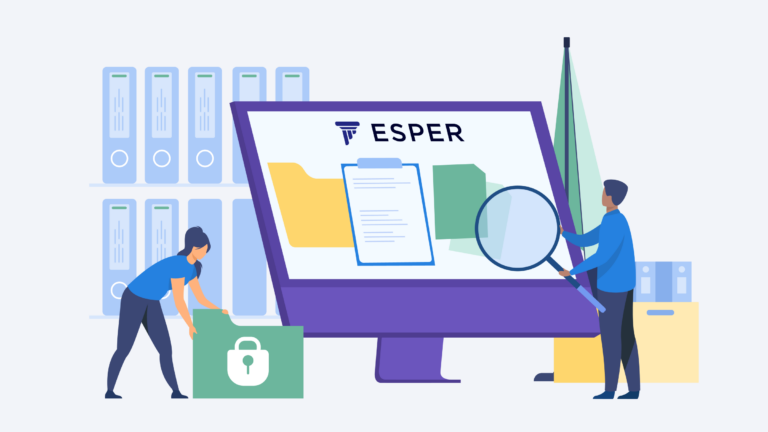
Cloud Technology: Driving better regulation with data analysis and artificial intelligence
Applying leading cloud technology to regulation and policymaking.
Applying leading cloud technology to regulation
Cloud technology, project management tools and advanced search capabilities enable agencies to analyze regulations and complete rulemakings faster with precision and accuracy.
Agency leaders across the country are increasingly being tasked with regulatory review and improvement as the proliferation and scope of regulations continues to grow. Executive directives have increased the need for more innovative efforts across government organizations with the following three most notable amongst them:
- Executive Order 13771 (“Reducing Regulation and Controlling Regulatory Costs”)
- M-17-21 (Memorandum, “Guidance Implementing Executive Order 13771, Titled “Reducing Regulation and Controlling Regulatory Costs”)
- Executive Order 13891 (“Promoting the Rule of Law Through Improved Agency Guidance Documents”)
How are agencies expected to tackle these responsibilities with hundreds of thousands of pages of regulations, guidance, and other agency directives? With existing internal resources, many regulatory agencies risk the inability to fully comply with these rules due to the intensive labor needed to meet these requirements.
New technological advances in natural language processing, flexible workflow tools, and big data analytics can overcome the current challenges and provide a faster route to efficient and accurate regulatory improvement.
In this paper, we outline how regulatory technology can identify regulations of interest and drive action on those that need review, including:
- Regulations containing highly similar or duplicative language from other regulations
- Regulations containing legally-prohibited language or phrases
- Regulations containing a high number of restrictions or restrictive phrases
- Regulations containing references to repealed regulations or statutes
- Similar regulations from individual states or other federal agencies
- Outdated or expired regulations
It’s been 22 years since the average federal regulation was last updated
Esper’s proprietary data analysis techniques dynamically analyze federal regulations over time and detect important dates associated with a regulation or policy such as the date it was authored, effective, and last updated.
The information from Esper demonstrates the opportunities to use analytics to generate quick, actionable insights.
Where can an individual find these regulations?
Public access to regulations lives across many systems:
- Electronic Code of Federal RegulationsCode of Federal Regulations (eCFR)
- Code of Federal Regulations (CFR)
- Regulations.gov
- Federal Register
Key Insights
- The oldest federal regulation that has gone the longest without an update is from July 2, 1862 (7 U.S. Code § 307).
- The longest federal regulation in the Code of Federal Register is 609, 002 characters long spanning roughly 220 pages (8 C.F.R 214.2).
- The federal regulation with the most restrictions has 1,263 restrictions in one single regulation (8 C.F.R. 214.2).
- The Code of Federal Regulations is composed of 50 Titles. Federal Elections (Title 11) is composed of the most parts (9499).
Finding a regulation of interest takes a user at least five separate screens if they know exactly what they’re looking for.

Rulemakings pass through at least nine stages and often take over a year to complete
The federal rulemaking process is governed by the Administrative Procedure Act (APA) (5 U.S.C. Chapter 5) as well as a number of executive orders, agency directives, and internal policies.
Its various stages can be difficult to manage without project management technology to ensure team alignment and success.
State governments also have their own unique internal administrative processes that mirror the federal process.
Some states have found innovative ways to modernize their processes. For example, Colorado’s process requires the review of enforcement data to evaluate what regulations need review due to lack of clarity.

The average federal regulation contains 2,617 characters
Some policies contain over 600,000 characters and take over six hours to fully read

Given the overwhelming scale of regulations, agencies often find that significant portions of their code are in need of review.
This can mean that the regulations contain repealed references, have high levels of restrictions, contain prohibited language, or other important considerations.
Outdated regulations are only some of the common bottlenecks for regulatory progress within agencies. Other common sources of regulatory hurdles are related to agency internal operations.
Regulatory management challenges
- No unified regulatory calendar: Non-standard planning across bureaus or agencies can create communication gaps that result in missed deadlines for rulemaking stage completion.
- Unclear internal communication and ownership: Without a dedicated resource tracking action items and what team members are responsible for particular tasks, projects can be delayed or dropped entirely.
- Difficulty in group collaboration: Numerous stakeholders are engaged in rulemakings yet they have limited infrastructure that supports collaboration for regular tasks like redlining, suggesting edits, or reviewing analytics.
How to enable regulatory success with cloud technology
Governments need to evaluate their people, policies, and tools to chart a path towards regulatory success. Below we detail common ways to enable regulatory improvement across governments.
- Data Intelligence: Use cloud technology to gather insights on the content of regulations, including their administrative history, associated documentation, guidance, and other key pieces of information.
- Implementation: Any new technology solutions should be deployed to a set amount of groups over a defined time period to provide for a discovery phase and iteration.
- Collaborative workflows: Apply systems with multi-user environments for administrative drafting and review with supporting security and user permission features.
- Flexible Clearance Management: Adopt technology and processes that provide for multiple permissions and review paths for varying needs across different bureaus and agencies.
- Accessible markup language: Provide updates on administrative rulemaking activity in a format that is accessible and clearly indicates changes made and historical information associated with that rule.
- Record Management: Record regulations and metric-driven agency activity in reportable and accessible formats and revisit them over time to ensure their integrity.
Closing considerations
Proper management of regulations will always require human oversight and effort. New technologies are not a regulatory panacea and shouldn’t be considered one. However, new advances in workflow and analytics technologies promise to free up time and resources to spend on knowledge labor in place of manual regulatory work and encourage regulators to apply their subject matter expertise on the areas that matter most.
About the authors
Maleka Momand is the CEO of Esper, a regulatory technology company she co-founded with Joe Lonsdale. Prior to starting Esper, she worked in Silicon Valley and witnessed first-hand the impact of regulation on innovation in the private sector. Today, she works with governments to provide industry-leading cloud technology that promotes accountability, data, and oversight in the regulatory process. Maleka is the former President of Argive, a regulatory non-profit and serves as an advisor to the Cicero Institute. She calls Austin, Texas home.
Connor McCarthy is the Chief of Staff at Esper. Prior to his work at Esper, he assisted entrepreneurs as a policy advisor to Joe Lonsdale at 8VC and as a partner on the Market Development team at Andreessen Horowitz. He has also served as a healthcare and tax policy analyst at Capitol Counsel. He graduated from Georgetown University with honors in philosophy. He also is an advisor to the Cicero Institute.
About Esper
Regulation plays a critical role in the health and safety of the people and the well-being of our economy. In order to make good policy, governments need a sophisticated way to create, track, and manage administrative rules.
Esper currently partners with numerous governments to provide a secure, cloud-based platform to support the review, creation, and management of regulation with attention to data and impact on the business community. Numerous states have partnered with Esper to support their administrative process needs.


